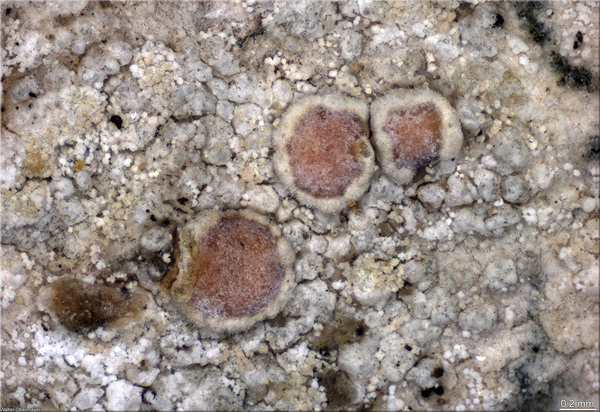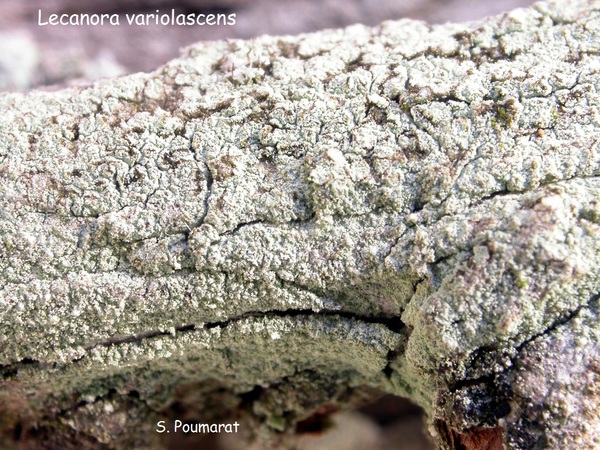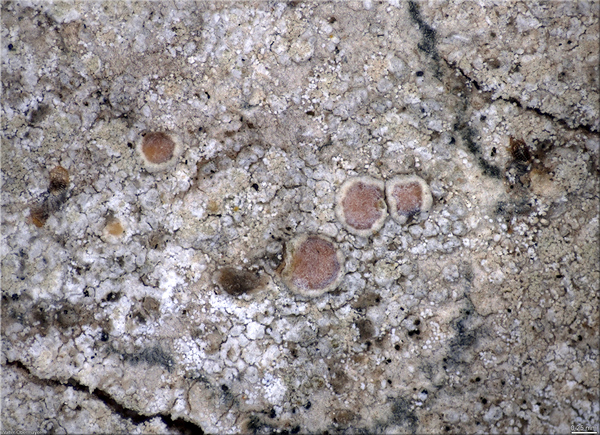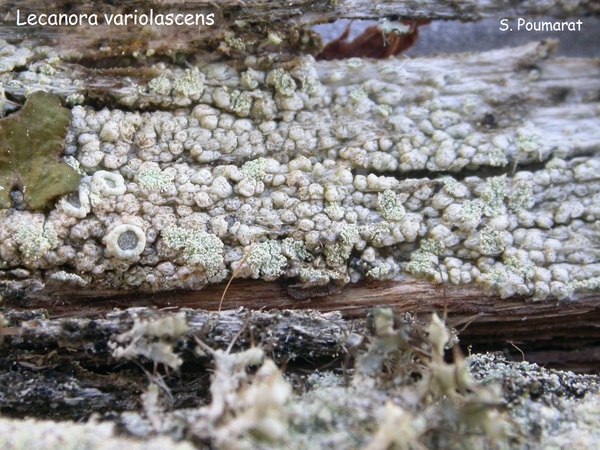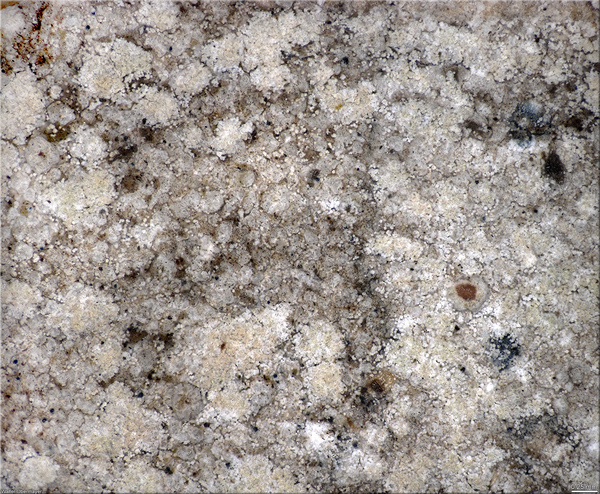Lecanora variolascens Nyl.
Flora, 64: 183, 1881.
Synonyms: Lecanora bavarica Poelt
Distribution: N - TAA (Nascimbene & al. 2007b).
Description: Thallus crustose, episubstratic, smooth to rough, often verrucose especially in central parts, grey-white or yellowish white, sorediate, the soralia flat to slightly convex, whitish, at first orbicular and well-delimited, 0.3-1 mm across, later more or less confluent, but rarely forming a sorediate crust; soredia farinose. Medulla filled by large calcium oxalate crystals. Apothecia often present, lecanorine, 0.5-1.5 mm across, sessile, with a flat, orange-brown to brown, often pruinose disc and a smooth to crenulate, thick, raised, sometimes flexuose thalline margin. Thalline exciple ecorticate, pulicaris-type, with very large crystals (up to 100 μm) visible under polarized light, which are soluble in N; epithecium reddish brown to grey-brown, the pigment dissolving in K, with 35(-38) μm wide, brown granules on the surface of paraphyses tips, which are readily soluble in K, very slowly in N; hymenium colourless, 50-80 μm high; paraphyses 1-2 μm thick at mid-level, the apical cells slightly swollen, up to 3 μm wide; hypothecium colourless to yellowish. Asci 8-spored, clavate, very thin-walled, with a K/I+ blue, tall tholus penetrated by a faintly amyloid apical cushion, the wall K/I-, surrounded by a blue outer layer, Lecanora-type. Ascospores 1-celled, hyaline, broadly ellipsoid, 8-12.5 x 5-9 μm. Photobiont chlorococcoid. Spot tests: thallus and soralia K+ yellow, C-, KC-, P+ bright yellow (reaction best visible on sections under the microscope). Chemistry: atranorin (major), psoromic acid (major), chloratranorin and zeorin (minor or traces).Note: mostly found at the base of trunks of isolated deciduous trees; perhaps overlooked, being often sterile. For the differences towards L. intumescens see Lumbsch & al. (1997) and Malíček & al. (2017).
Growth form: Crustose
Substrata: bark
Photobiont: green algae other than Trentepohlia
Reproductive strategy: mainly asexual, by soredia, or soredia-like structures (e.g. blastidia)
Commonnes-rarity: (info)
Alpine belt: absent
Subalpine belt: absent
Oromediterranean belt: absent
Montane belt: very rare
Submediterranean belt: extremely rare
Padanian area: absent
Humid submediterranean belt: absent
Humid mediterranean belt: absent
Dry mediterranean belt: absent

Predictive model
Growth form: Crustose
Substrata: bark
Photobiont: green algae other than Trentepohlia
Reproductive strategy: mainly asexual, by soredia, or soredia-like structures (e.g. blastidia)
Commonnes-rarity: (info)
Alpine belt: absent
Subalpine belt: absent
Oromediterranean belt: absent
Montane belt: very rare
Submediterranean belt: extremely rare
Padanian area: absent
Humid submediterranean belt: absent
Humid mediterranean belt: absent
Dry mediterranean belt: absent

Predictive model
 INDEX FUNGORUM
INDEX FUNGORUM
 GBIF
GBIF
 DOLICHENS
DOLICHENS
